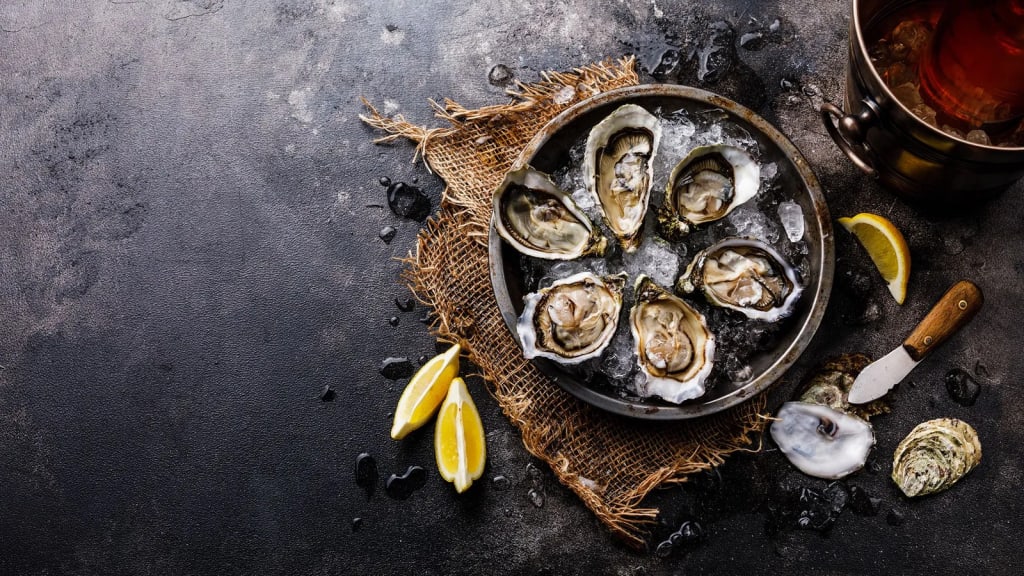Do aphrodisiacs really work?
Chocolate, strawberries, oysters: we’ve all heard that certain foods can heighten our sexual desire and even performance. But is there any truth to the claims? BBC Future investigates.

Named after Aphrodite, the Greek goddess of love, aphrodisiacs are said to increase libido, potency, and sexual pleasure. Who hasn’t heard that chocolates, strawberries and oysters can have such a powerful effect? Historically, aphrodisiacs have included even quirkier edibles – including the toxic Spanish fly, ground rhinoceros and rare plant extracts.
In fact, during research for her book Intercourses, co-author Martha Hopkins found that almost every food has been considered an aphrodisiac at one time.
“Historically, foods considered to be aphrodisiacs were hard to find, rare or expensive, like truffles, foie gras and caviar, or shaped like a sex organ, like asparagus or artichokes, and even animal testicles,” Hopkins says.

While we tend to think of aphrodisiacs in terms of lust, romance and libido, in the 17th Century – when everything from pigeons to almonds to parsnips were considered aphrodisiacs – they were associated with reproduction and fertility and given to married couples as more of a medical substance, says Jennifer Evans, senior lecturer in history at the University of Hertfordshire who researches the history of food and fertility.
But can any food really affect sexual desire and performance? And why is the idea so persistent?
You might also like:
• Pheromones are probably not why people find you attractive
• Cold remedies: Old wives’ tales or legitimate science?
• Is juicing actually good for you?
Sexy snacks
Certain foods can help in a similar way to Viagra medication – by relaxing blood vessels and improving blood flow to the genitals
For those who have problems with their circulation, it’s true that certain foods can help in a similar way to Viagra medication – by relaxing blood vessels and improving blood flow to the genitals. The amino acid L-arginine, found in foods such as pumpkins, walnuts and beef, is converted to nitric oxide in the body, which increases blood flow. So do foods high in omega 3 fatty acids, including salmon and avocado. Another helper is quercetin. Found in apples, berries, grapes, red wine, garlic and dark chocolate, quercetin has anti-inflammatory properties that can improve blood flow.
However, only people with compromised blood flow will see any improvements to sexual function by eating these foods, says Lauri Wright, spokesperson for the US Academy of Nutrition and Dietetics. Someone with good circulation isn’t likely to see any changes.
When most of us think of aphrodisiacs, though, we don’t think about sexual function, but desire.
One food that’s long been believed to heighten sexual desire is chocolate. Studies have shown that cocoa can increase blood flow in parts of our body beyond our torso. But when its direct relationship with sexual desire was studied, there was no evidence found to support its use as an aphrodisiac.

In fact, no evidence has been found proving that any one food heightens sexual arousal or desire.
There is one exception: alcohol. A number of small studies have shown alcohol consumption is linked to arousal. But it can also impede sexual performance.
Red wine in particular may be indirectly linked to sexual function because of its potential benefits to heart health, says Michael Krychman, obstetrician, gynaecologist and a clinical sexual counsellor at the Southern California Center for Sexual Health and Survivorship Medicine. But it’s important to note that the link between red wine and cardiovascular health remains inconclusive.
The Mediterranean diet may have aphrodisiac qualities
Wine’s reputation as an aphrodisiac also may come from the fact that it’s part of the Mediterranean diet, defined as consisting primarily of plant-based foods such as fruits, vegetables, wholegrains, legumes and nuts, fish and olive oil and being relatively low in sugar, cheese and meat. More of a lifestyle than a single food, the Mediterranean diet may have aphrodisiac qualities.
Holistic health
“Research has found that red wine effects sexual function, but we don’t know if it’s the diet, or a combination of diet, lifestyle and genetics,” Krychman says. “What we do know is that, for people who exercise, have a healthy diet and lower stress, all these elements work together and they have better sex lives.”

Our overall diet can work as an aphrodisiac through benefits like improved blood flow, increased hormones or elevated mood, says Wright.
One study involving 600 women with type two diabetes found that the Mediterranean diet was linked to lower levels of sexual dysfunction, while another study concluded the diet may also be associated with an improvement of erectile dysfunction. “The bottom line is that a healthy diet of seafood, lean meats, nuts, fruit, vegetables and wholegrains, which is basically the Mediterranean diet, helps support nerve function and supports blood flow and hormones,” Wright says.

The reason there is no supporting evidence for any individual food to be an aphrodisiac is a good one: any one food having such a potent effect would be dangerous, says Jessica Abbott, senior lecturer in evolutionary ecology at Lund University in Sweden.
“Most of the food we eat isn’t going to have side effects, which is reassuring. If they did, it wouldn’t be safe to eat them regularly,” she says.
“Any herbs that have been associated with aphrodisiacs are the types of food we wouldn’t usually eat much of, such as touch-me-not plants and high-dose root extract, which have active compounds used as defence against herbivores.”
Mind over matter
So why do some people swear that certain foods have aphrodisiac qualities?
It may simply be because they believe they will, says Krychman.
“Oysters have limited evidence of having an effect on sexual desire, but a rigorous trial [proving that effect] is lacking – partly because the placebo effect is so big,” he says.
The fact that sexual desire is so multifaceted and individual for all aphrodisiacs can work to its advantage, says Nan Wise, psychotherapist and sex therapist at Rutgers University in New Jersey.

“Desire is physical, psychosocial and relational, and involves a lot of variables. If you believe a food increases desire, the psychology of the placebo effect affects our capacity to get turned on or off,” Wise says.
It’s all about the context of the food we’re eating, adds the University of Hertfordshire’s Evans. “You don’t think of chocolate as an aphrodisiac every time you break into Twix. You have to be in the right context,” she says.

Our individual experiences also could be strong determinants of which foods boost sexual desire in each of us, says Jean-Christophe Billeter, associate professor of social and sexual behaviour at the University of Groningen in the Netherlands.
“Humans are very suggestive, and the brain is wired to form a strong memory when we have sexual success. Depending on the situation, if something happened in the environment where a person had sex, this will become something to trigger the desire to have sex in the future.”
Hunger drive
In fact, it may turn out that any food can have aphrodisiac qualities. At the very least, if a person is starving and there’s no food around, it makes sense that their sex drive would go down.

“Evolutionarily speaking, humans have a desire to have sex in order to reproduce, and we need to be of a healthy weight and have a diet that provides the right nutrients in order to do this,” Billeter says.
There is evidence that food regularly appeared in 17th-Century pornography for the same reason, says Evans: it was there to help fuel a couple for the next round.
Mating patterns change significantly when food isn’t nearb
In his experiments with fruit flies, Billeter has found that mating patterns change significantly when food isn’t nearby. If fruit flies are in an environment where there is food, they’ll mate with the first male they encounter up to seven times a day. If there’s no food, they only mate once.
There is also evidence from nature that we eat foods that make us look appealing to the opposite sex. Consider the characteristics of certain birds: males are more colourful because females find it attractive, and they achieve this colour by eating foods with carotenoids.
This applies to humans, too. “In the past, women deemed the most attractive tended to be fatter, as being fat when there wasn’t much food around could indicate the woman is good at reproducing,” Billeter says.
There may also be an aphrodisiac quality inherent in the practice of giving food to a sexual partner – which perhaps explain the real reason a box of Valentine’s chocolates or a home-cooked meal can induce desire.

“Spiders catch flies to present to females in order to mate, while a species of cricket produces a jelly-like structure to induce females into mating with them,” Abbott says.
The idea of aphrodisiacs has survived so long because people have always been drawn to concepts that promise youth, longevity and fertility, Evans argues.
And for this reason, it’s likely we’ll continue to believe in them for centuries to come.
About the Creator
Diane Dora
man may lead a horse to the water, but he cannot make it drink.






Comments
There are no comments for this story
Be the first to respond and start the conversation.